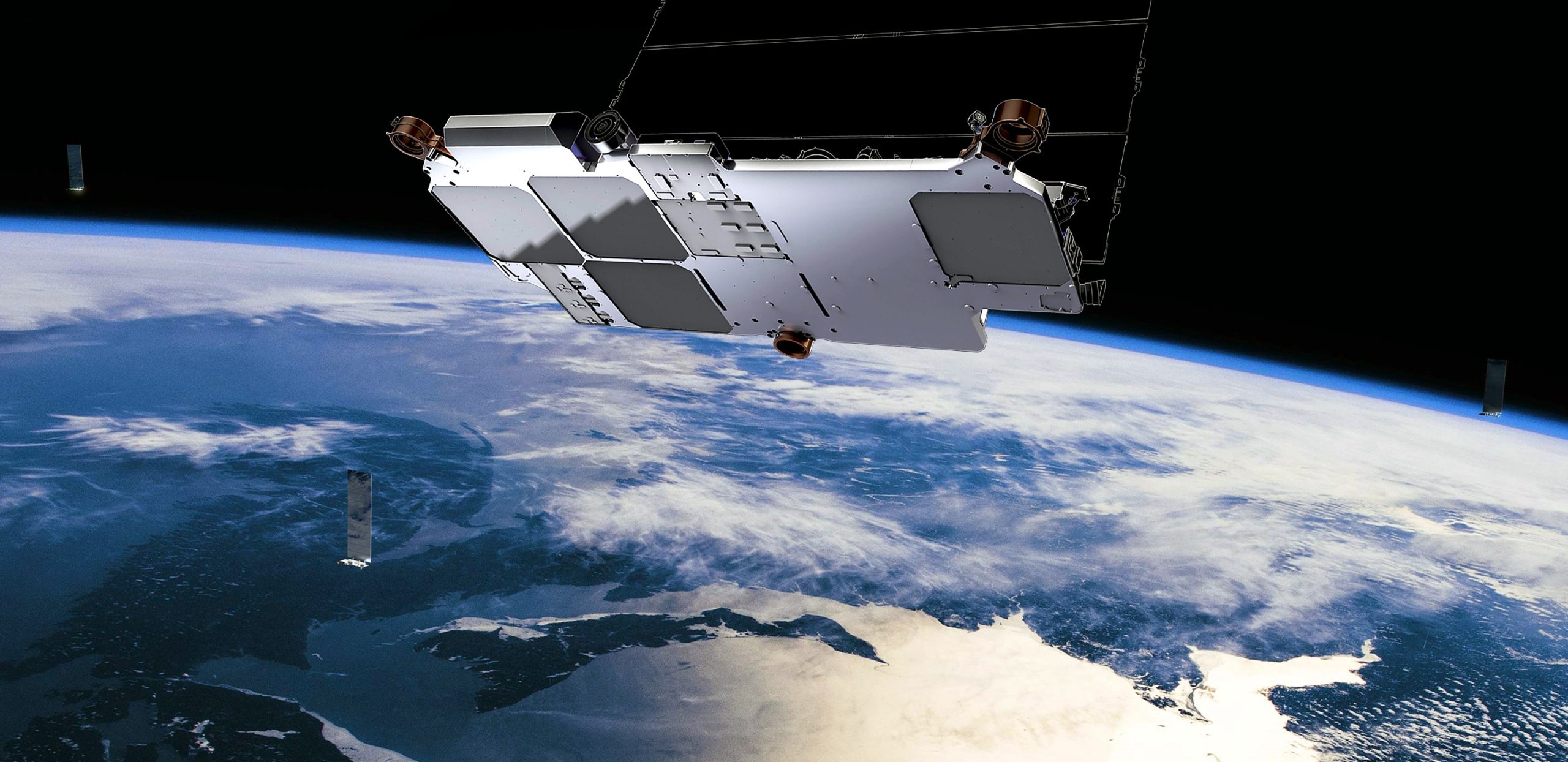
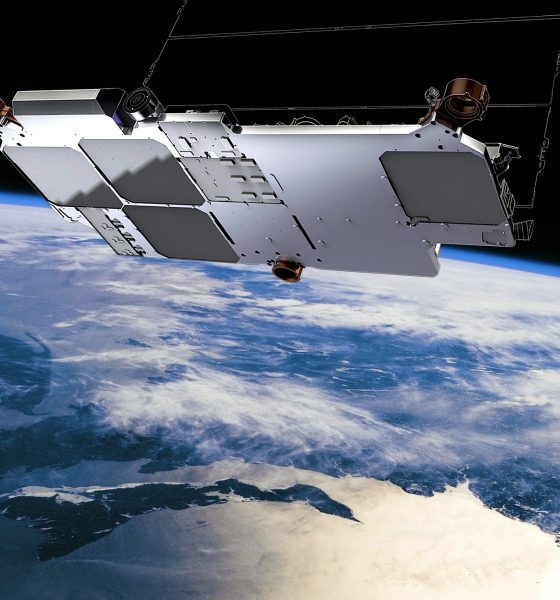
News
SpaceX Starlink ‘space lasers’ successfully tested in orbit for the first time
SpaceX has revealed the first successful test of Starlink satellite ‘space lasers’ in orbit, a significant step along the path to an upgraded “Version 2” constellation.
In simple terms, those “lasers” are a form of optical (light-based) communication with an extremely high bandwidth ceiling, potentially permitting the wireless, high-speed transfer of vast quantities of data over equally vast distances. Of the ~715 Starlink satellites SpaceX has launched over the last 16 months, some 650 are operational Version 1 (v1.0) spacecraft designed to serve a limited group of customers in the early stages of the constellation. Prior to SpaceX’s September 3rd announcement, it was assumed that none of those satellites included laser interlinks, but now we know that two spacecraft – presumably launched as part of Starlink-9 or -10 in August – have successfully tested prototype lasers in orbit.
Ever since CEO Elon Musk first revealed SpaceX’s satellite internet ambitions in early 2015, those plans have included some form of interconnection between some or all of the thousands of satellites the company would need to launch. While a functional low Earth orbit (LEO) satellite internet constellation doesn’t intrinsically need to have that capability to function or be successful, inter-satellite links offer some major benefits in return for the added spacecraft complexity and cost.
The single biggest draw of laser interlinks is arguably the major reduction in connection latency (ping) they can enable compared to a similar network without it. By moving a great deal of the work of networking into orbit, the data transported on an interlinked satellite network would theoretically require much less routing to reach an end-user, physically shortening the distance that data has to travel. The speed of light (300,000 kilometers per second) may be immense but even on the small scale of the planet Earth, with the added inefficiencies inherent in even the best fiber optic cables, routing data to and from opposite ends of the planet can still be slowed down by high latency.
Without interlinks, Starlink and internet constellations like it function by acting more like a go-between for individual users and fixed ground stations that then connect those users to the rest of the Internet. Under that regime, the performance of constellations is inherently filtered through the Earth’s existing internet infrastructure and is necessitates the installation of ground stations relatively close to network users. If a satellite without interlinks can ‘see’ (and thus communicate with) customers but can’t ‘see’ a ground station from the same orbital vantage point, it is physically incapable of connecting those communications with the rest of the internet.
This isn’t a showstopper. As SpaceX’s very early Starlink constellation has already demonstrated through beta testers, the network is already capable of serving individual users 100 megabits per second (Mbps) of bandwidth with latency roughly comparable to average wired connections. The result: internet service that is largely the same as (if not slightly worse and less convenient than) existing fiber options. To fully realize a LEO internet constellation’s potential of being much better than fiber, high-performance laser interlinks are thus a necessity.
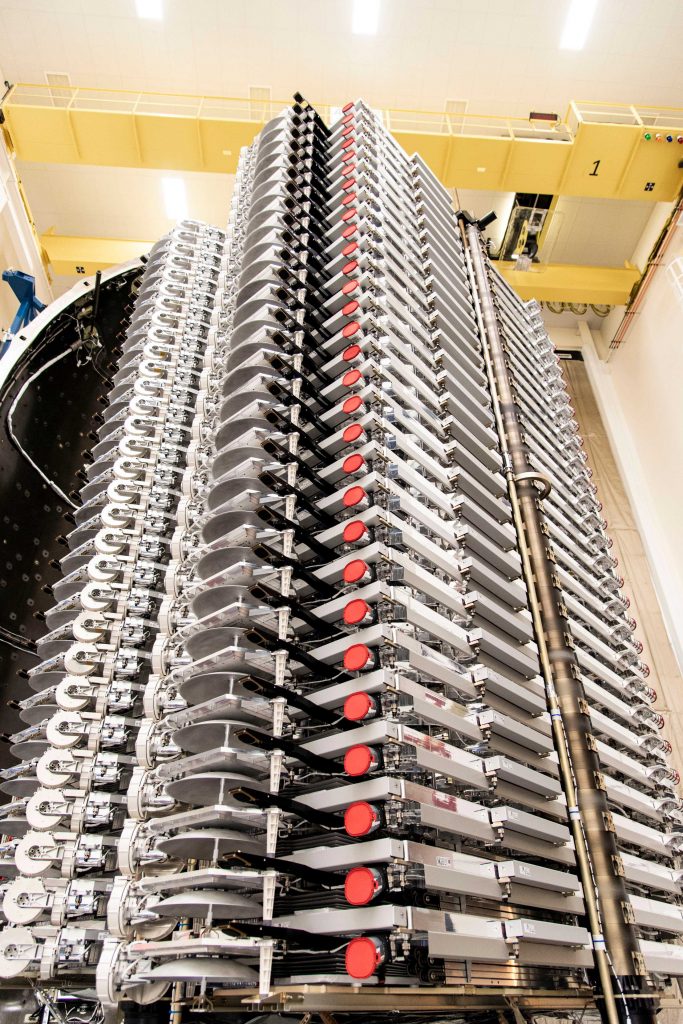
With laser interlinks, the aforementioned connection dropout scenario would be close to impossible. In the event that an active satellite finds itself serving customers without a ground station in reach, it would route those forlorn data packages by laser to a different satellite with immediate ground station access. One step better, with enough optimization, user communications can be routed by laser to and from the ground stations physically closest to the user and their traffic destination. With a free-floating network of satellites communication in vacuum along straight lines, nothing short of a direct, straight fiber line could compete with the resulting latency and routing efficiency.
Interlinks offer one last significant benefit: by sacrificing latency, an interlinked network will be able to service a larger geographic area by allowing the connections of users far from ground stations to be routed through other satellites to the nearest ground station. Large-scale ground station installation and the international maze of permitting it requires can take an inordinate amount of time and resources for nascent satellite communications constellations
SpaceX’s fully-interlinked Starlink Version 2 constellation is targeting latency as low as 8 milliseconds and hopes to raise the bandwidth limit of individual connections to a gigabit or more. As soon as a viable Starlink v2.0 satellite design has been finalized and tested in orbit, SpaceX will likely end v1.0 production and launches, entering the second phase of iteration after the v0.9 to v1.0 jump.
Check out Teslarati’s Marketplace! We offer Tesla accessories, including for the Tesla Cybertruck and Tesla Model 3.

News
Tesla extends FSD Supervised ride-alongs in Europe by three months
Needless to say, it does appear that FSD fever is starting to catch in Europe.

Tesla appears to be doubling down on its European Full Self-Driving (Supervised) push, with the company extending its demo ride-along program by three months until the end of March 2026. The update seems to have been implemented due to overwhelming demand.
Needless to say, it does appear that FSD fever is starting to catch in Europe.
Extended FSD demonstrations
Tesla EU Policy and Business Development Manager Ivan Komušanac shared on LinkedIn that the company is offering ride-along experiences in Germany, France and Italy while working toward FSD (Supervised) approval in Europe.
He noted that this provides a great feedback opportunity from the general public, encouraging participants to record and share their experiences. For those unable to book in December, Komušanac teased more slots as “Christmas presents.”
Tesla watcher Sawyer Merritt highlighted the extension on X, stating that dates now run from December 1, 2025, to March 31, 2026, in multiple cities including Stuttgart-Weinstadt, Frankfurt and Düsseldorf in Germany. This suggests that the FSD ride-along program in Europe has officially been extended until the end of the first quarter of 2026.
Building momentum for European approval
Replies to Merritt’s posts buzzed with excitement, with users like @AuzyMale noting that Cologne and Düsseldorf are already fully booked. This sentiment was echoed by numerous other Tesla enthusiasts on social media. Calls for the program’s expansion to other European territories have also started gaining steam, with some X users suggesting Switzerland and Finland as the next locations for FSD ride-alongs.
Ultimately, the Tesla EU Policy and Business Development Manager’s post aligns with the company’s broader FSD efforts in Europe. As per recent reports, Tesla recently demonstrated FSD’s capabilities for Rome officials. Reporters from media outlets in France and Germany have also published positive reviews of FSD’s capabilities on real-world roads.
News
Tesla’s six-seat extended wheelbase Model Y L sold out for January 2026
Estimated delivery dates for new Tesla Model Y L orders now extend all the way into February 2026.
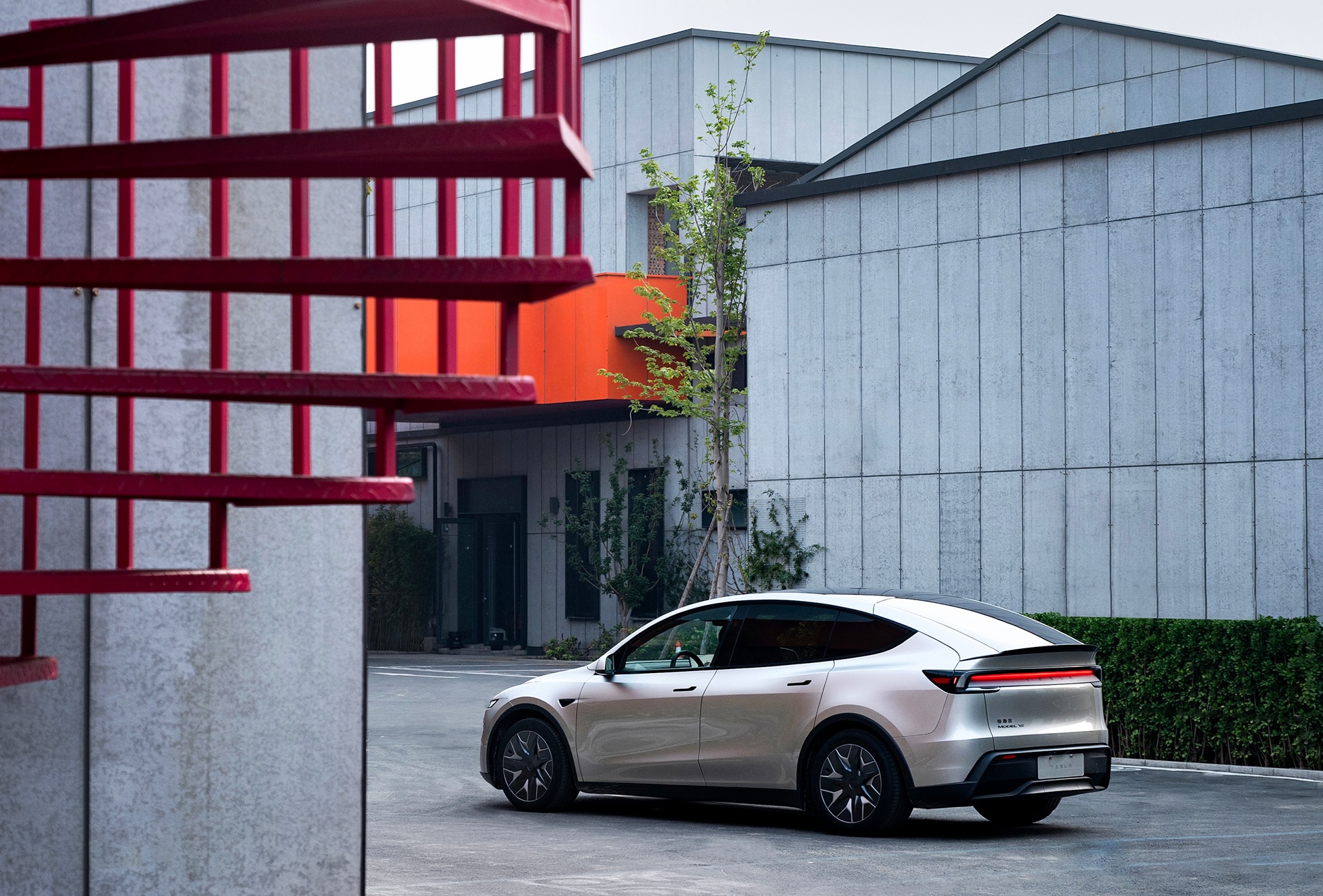
The Tesla Model Y L seems to be in high demand in China, with estimated delivery dates for new orders now extending all the way into February 2026.
This suggests that the Model Y L has been officially sold out from the rest of 2025 to January 2026.
Model Y L estimated delivery dates
The Model Y L’s updated delivery dates mark an extension from the vehicle’s previous 4-8 week estimated wait time. A detailed chart shared by Tesla data tracker @Tslachan on X shows the progressions of the Model Y L’s estimated delivery dates since its launch earlier this year.
Following its launch in September, the vehicle was given an initial October 2025 estimated delivery date. The wait times for the vehicle were continually updated over the years, until the middle of November, when the Model Y L had an estimated delivery date of 4-8 weeks. This remained until now, when Tesla China simply listed February 2026 as the estimated delivery date for new Model Y L orders.
Model Y demand in China
Tesla Model Y demand in China seems to be very healthy, even beyond the Model Y L. New delivery dates show the company has already sold out its allocation of the all-electric crossover for 2025. The Model Y has been the most popular vehicle in the world in both of the last two years, outpacing incredibly popular vehicles like the Toyota RAV4. In China, the EV market is substantially more saturated, with more competitors than in any other market.
Tesla has been particularly kind to the Chinese market, as it has launched trim levels for the Model Y in the country that are not available anywhere else, such as the Model Y L. Demand has been strong for the Model Y in China, with the vehicle ranking among the country’s top 5 New Energy Vehicles. Interestingly enough, vehicles that beat the Model Y in volume like the BYD Seagull are notably more affordable. Compared to vehicles that are comparably priced, the Model Y remains a strong seller in China.
Elon Musk
NVIDIA CEO Jensen Huang commends Tesla’s Elon Musk for early belief
“And when I announced DGX-1, nobody in the world wanted it. I had no purchase orders, not one. Nobody wanted to buy it. Nobody wanted to be part of it, except for Elon.”
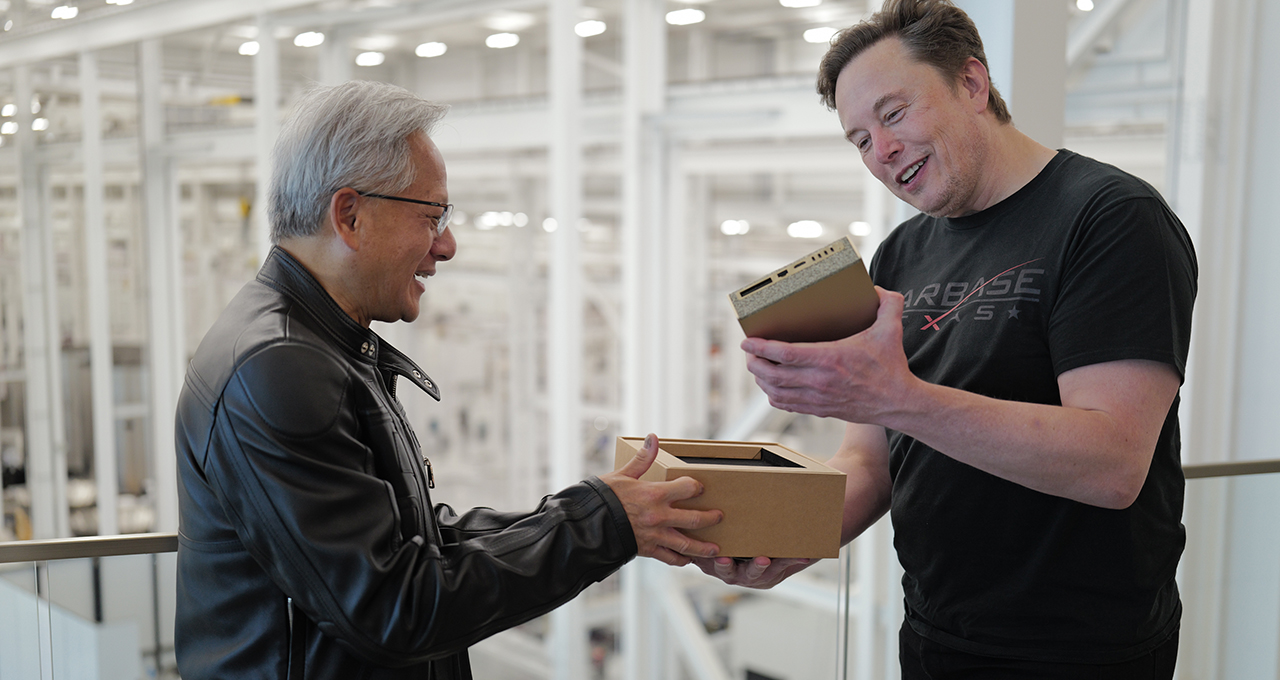
NVIDIA CEO Jensen Huang appeared on the Joe Rogan Experience podcast on Wednesday and commended Tesla CEO Elon Musk for his early belief in what is now the most valuable company in the world.
Huang and Musk are widely regarded as two of the greatest tech entrepreneurs of the modern era, with the two working in conjunction as NVIDIA’s chips are present in Tesla vehicles, particularly utilized for self-driving technology and data collection.
Nvidia CEO Jensen Huang regrets not investing more in Elon Musk’s xAI
Both CEOs defied all odds and created companies from virtually nothing. Musk joined Tesla in the early 2000s before the company had even established any plans to build a vehicle. Jensen created NVIDIA in the booth of a Denny’s restaurant, which has been memorialized with a plaque.
On the JRE episode, Rogan asked about Jensen’s relationship with Elon, to which the NVIDIA CEO said that Musk was there when nobody else was:
“I was lucky because I had known Elon Musk, and I helped him build the first computer for Model 3, the Model S, and when he wanted to start working on an autonomous vehicle. I helped him build the computer that went into the Model S AV system, his full self-driving system. We were basically the FSD computer version 1, and so we were already working together.
And when I announced DGX-1, nobody in the world wanted it. I had no purchase orders, not one. Nobody wanted to buy it. Nobody wanted to be part of it, except for Elon.
He goes ‘You know what, I have a company that could really use this.’ I said, Wow, my first customer. And he goes, it’s an AI company, and it’s a nonprofit and and we could really use one of these supercomputers. I boxed one up, I drove it up to San Francisco, and I delivered it to the Elon in 2016.”
The first DGX-1 AI supercomputer was delivered personally to Musk when he was with OpenAI, which provided crucial early compute power for AI research, accelerating breakthroughs in machine learning that underpin modern tools like ChatGPT.
Tesla’s Nvidia purchases could reach $4 billion this year: Musk
The long-term alliance between NVIDIA and Tesla has driven over $2 trillion in the company’s market value since 2016.








